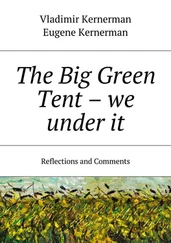Herbert Tiedemann - Babi Yar - Critical Questions and Comments
Здесь есть возможность читать онлайн «Herbert Tiedemann - Babi Yar - Critical Questions and Comments» весь текст электронной книги совершенно бесплатно (целиком полную версию без сокращений). В некоторых случаях можно слушать аудио, скачать через торрент в формате fb2 и присутствует краткое содержание. Жанр: История, на английском языке. Описание произведения, (предисловие) а так же отзывы посетителей доступны на портале библиотеки ЛибКат.
- Название:Babi Yar: Critical Questions and Comments
- Автор:
- Жанр:
- Год:неизвестен
- ISBN:нет данных
- Рейтинг книги:4 / 5. Голосов: 1
-
Избранное:Добавить в избранное
- Отзывы:
-
Ваша оценка:
- 80
- 1
- 2
- 3
- 4
- 5
Babi Yar: Critical Questions and Comments: краткое содержание, описание и аннотация
Предлагаем к чтению аннотацию, описание, краткое содержание или предисловие (зависит от того, что написал сам автор книги «Babi Yar: Critical Questions and Comments»). Если вы не нашли необходимую информацию о книге — напишите в комментариях, мы постараемся отыскать её.
Babi Yar: Critical Questions and Comments — читать онлайн бесплатно полную книгу (весь текст) целиком
Ниже представлен текст книги, разбитый по страницам. Система сохранения места последней прочитанной страницы, позволяет с удобством читать онлайн бесплатно книгу «Babi Yar: Critical Questions and Comments», без необходимости каждый раз заново искать на чём Вы остановились. Поставьте закладку, и сможете в любой момент перейти на страницу, на которой закончили чтение.
Интервал:
Закладка:
6.5. Logistic and Organizational Questions
Shooting 33,771 or even far more people within two days and then removing all traces of the deed (which is impossible anyhow, with the investigative means available today!) would require superb organization and logistics. Some aspects thereof were discussed in the context of specific issues, and for reasons of space constraints we shall have to leave it at that.
We would stress, however, that these problems would have been unmanageable under extreme conditions such as prevailed right after the taking of Kyiv, with fires, blasting and partisan activity on the one hand and the continuing battles at the front, with their concomitant demand for human and material resources, and in autumn of 1943 in the face of the advancing deadly front of the Soviet army.
6.6. Securing Evidence
Why did no one ever try to secure any evidence in order to prove the murders?
By way of contrast, some time ago, following a double murder of policemen, the German police vowed to dig up the entire military training area of Sennelager if necessary to find the bodies.
When the German Federal Criminal Police Office got into trouble in the context of the cause of death of a terrorist following the 1993 incident in Bad Kleinen (one terrorist was shot by the police, another one arrested), a Minister resigned, a very high-ranking official got his walking papers, the entire track was gone over virtually with a fine-tooth comb, domestic and foreign institutes were commissioned with investigations, the Special Unit involved was interrogated, physical evidence was compared with testimony - practically everything that could be done to remove any and all doubts was done.
But in the case of Babi Yar, witnesses and allegations (and from Stalin's glorious days, no less!) are blindly given full credence even though they contradict each other and claim the silliest impossibilities.
Why does no one bother to lift a finger in this instance, to secure bodies and remains, residue, murder weapons etc., even though countless victims are at issue? Is such conduct by the authorities responsible in keeping with the binding international legal guidelines?
It is clearly not necessary to specify which questions a high-ranking, disinterested, international and incorruptible committee of experts would have to examine in order to arrive at a relevant forensic assessment!
But the incriminating documents must also be examined very critically, not least of all because they too are rendered questionable by the evidence contained in the air photos.[16] The so-called Gerstein Report,[112] and the Jerusalem Trial of John Demjanjuk[113] no less, show that the champions of one particular school of thought do not hesitate to commit grotesque falsifications even many decades after the end of the war. Some few examples:
Despite a clear and unequivocal international report issued after the discovery of the mass graves of Katyn, the atrocity propaganda churned out by Ilya Ehrenburg and Wassily Grossmann continued - not only throughout the Nuremberg Trials, but right up until a few years ago - to impute the Stalinist mass murders to the Germans.[114] In this vein, Katyn and Babi Yar are not the only examples that come to mind; there are also the massacres of Lvov, Char'kov, Bykivnia, Bielhorodka, Darnitza and Vinnica. They represent many hundreds of thousands of victims, including some from the liquidation era of Lazar Moisejevich Kaganovich.[115] Katyn is the only case so far where the Soviets have admitted as late as 1991 that they were the perpetrators!
6.7. Babi Yar: From Mass Murder Site to Garbage Dump
After the end of the war the Soviets turned the ravine of Babi Yar into a municipal garbage dump, and later into a garbage incineration site.[116]
That the Soviets intended to build a sports facility over the site of indescribable crimes is no less incomprehensible...[117],[118]
To the best of this author's knowledge, Khrushchev's reprimand to Yevtushenko was never made public in the western world. Did this terse rebuke perhaps reflect the plain and simple truth?
Just what is self-evident about Babi Yar?
Notes
[1] For another thoroughly critical study of the alleged mass murder of Babi Yar with even more documents and reports about this event, e.g., an unsigned copy of a document without letterhead, filed in Bundesarchiv - Militärarchiv, rev. RH 26-454/28, (strange report of an unknown "Kriegsverwaltungsrat" from October 2, 1941), cf. esp. U. Walendy, "Babi Yar - Die Schlucht 'mit 33,771 ermordeten Juden'?", in Historische Tatsachen No. 51, Vlotho 1992.
[2] General Jodl, on June 4, 1946, in Nuremberg before the International Military Tribunal, Trial of the Major War Criminals, IMT, Nuremberg 1947, v. XV, p. 329.
[3] Document R-102 in IMT v. XXXVIII, pp. 292f.
[4] Encyclopaedia Judaica, Keter Pub. Ltd., Jerusalem, and Macmillan, New York 1971, v. 10, p. 994.
[5] Yisrael Gutman (chief ed.), Encyclopedia of the Holocaust, Macmillan, New York 1990, v. 1, pp. 133f.; cf. E. Jäckel, P. Longerich, H. J. Schoeps (eds.), Enzyklopädie des Holocaust, Argon, Berlin 1993, v. 1, pp. 144ff.
[6] Bundesarchiv [Federal Archives] Koblenz, R 58/218; J. Mendelsohn (ed.), The Holocaust, Garland, New York 1982, v. 10, pp. 51ff.
[7] E. R. Wiehn (ed.), Die Schoah von Babi Yar, Hartung-Gorre, Constance 1991, pp. 7f., 84, 86, 137, 141, 143f., 166f., 195f., 477.
[8] US National Archives, Record Group No. 373, exposure no. 45.
[9] A copy of this newspaper can be obtained from Polish Historical Society, PO Box 8024, Stamford, CT 06905. The report was written by the leaders of the Central Ukrainian Charitable Committee (Krakow) who arrived in Kyiv on Sept. 29, 1941, for their first visit of the 'liberated' capital of Ukraine. The leader of this mission was Prof. Kubyiovytch, editor of the Encyclopedia of Ukraine (cf. note 61). I owe this information to Dr. Myroslaw Dragan.
[10] Cf. Voldymyr Katylnyckyj in The Kyiv Evening News, March 16-19, 1996; a few days later this was allegedly re-printed in For Free Ukraine (Lviv). On July 10, 1997, the body of Katylnyckyj and his mother were found with multiple stab wounds in their modest apartment. This unchecked information were supplied by Myroslaw Dragan.
[11] Radiogram No. 346/KK.
[12] M. Wolski, Fact Sheet on the Occasion of the Fiftieth Anniversary of the Babi Yar Massacre, Polish Historical Society, PO Box 8024, Stamford, CT 06905, Oct. 1991, pp. 2f.; cf. M. Wolski, Revue d'Histoire Révisionniste 6 (1992), pp. 47-58 (http://www.lebensraum.org/french/rhr/Babiy.pdf).
[13] J. Patek, Memorial Services Commemorating the 50th Anniversary of Babi Yar Could be Attenuated by Aerial Photos Showing Absence of Mass Graves There (unpub. MS).
[14] JTA Daily News Bulletin, v. VIII no. 316, Wed., Dec. 31, 1941: "Retreating Nazi Armies Intensify Anti-Jewish Terror in Ukraine", Jewish Telegraphic Agency, New York.
[15] V. M. Molotov, The Molotov Notes on Nazi Atrocities, The American Council on Soviet Relations, New York Jan. 6, 1942, p. 14.
[16] J. C. Ball, Air Photo Evidence, Ball Resource Services Ltd., Delta/BC, 1992, pp. 106ff.; cf. his chapter, this volume.
[17] Jewish Telegraphic Agency, Daily News Bulletin, March 15, 1942, p. 1, JDC Representative Reports.
[18] J. Patek, op. cit. (note 13); cf. E. R. Wiehn, op. cit. (note 7), p. 102.
[19] "Kijow", in Podziemna Obsluga Prasy Pozagettowej; cf. Archives of the Jewish Historical Institute in Warsaw, Ringelblum-I file, p. no. illegible, July 18, 1942.
[20] JTA Daily News Bulletin, "Systematic Execution of Jews in Nazi-Occupied Russia Reported by Partisans", by JTA from Kujbishev; JTA New York edition, Oct. 28, 1942, p. 3.
Читать дальшеИнтервал:
Закладка:
Похожие книги на «Babi Yar: Critical Questions and Comments»
Представляем Вашему вниманию похожие книги на «Babi Yar: Critical Questions and Comments» списком для выбора. Мы отобрали схожую по названию и смыслу литературу в надежде предоставить читателям больше вариантов отыскать новые, интересные, ещё непрочитанные произведения.
Обсуждение, отзывы о книге «Babi Yar: Critical Questions and Comments» и просто собственные мнения читателей. Оставьте ваши комментарии, напишите, что Вы думаете о произведении, его смысле или главных героях. Укажите что конкретно понравилось, а что нет, и почему Вы так считаете.










